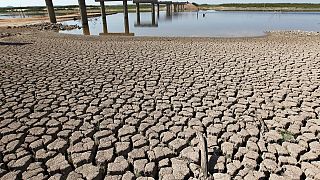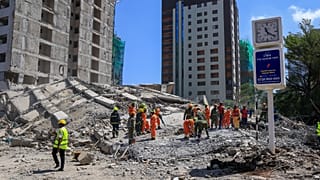Morocco
Mimoun Nadori kneels to dip his hand into the river and taste the water next to groves where his family has long grown fruits and vegetables on their northern Morocco farms.
He grimaces. It’s salty. But it didn’t used to be this way.
“Everything was green,” he remembers. “We drank from the river and washed with the river. We made a life with it.”
But less rainfall and more damming and pumping upstream has left less water flowing through Morocco’s Moulouya River and threatened the livelihoods of farmers like Nadori.
Where the river once flowed from the mountains into the Mediterranean, it now sits stagnant, allowing seawater to creep inland and turning water from a source of life to a deadly poison.
Nadori started importing water for the on-site chicken coop he manages after his cows accustomed to drinking from the river died. He knew neither that the water was brackish nor that they were feeding from it until they wound up dead.
Overuse of the river has also put new pressures on the reserves of water that lie beneath the ground as Moroccan farmers like Nadori — as well as those on the other side of the nearby Algerian border — dig more wells to compensate for the loss of their former supply.
“We won’t lie and say the reason is only humans or drought, it’s both,” he said. “We don’t know how to use water and we waste a lot of water.”










00:56
French farmers protest outside Macron’s over EU-Mercosur deal
01:00
Farmers from 27 EU countries protest and clash with police in Brussels over EU-Mercosur trade deal
00:24
South Sudan families battle rising Nile floods to survive
01:02
First rain of autumn falls in Iran's capital after months of intense drought
00:50
Saffron harvesting flourishes in Morocco's rural Ikniouen commune
05:00
How Japan’s food tech innovations target global food security challenges